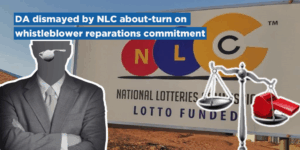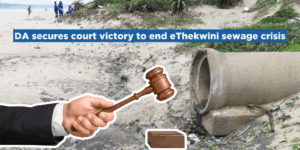The City-owned facilities that have been identified for demolition have not been used for several years. Many of these facilities were built in highly mobile dune systems and are covered by sand, or have been vandalised. Their removal is part of the City’s efforts in revitalising our coastline and optimising opportunities for social and economic use and growth. This programme also includes reducing future infrastructure risk due to climate change by removing buildings from sensitive and dynamic coastal zones.

Following on from Council’s approval on 31 October 2019, the City’s Environmental Management Department will now commence with the demolition of the buildings located along the coast at Strand, Monwabisi, Sonwabe, Macassar, Simon’s Town, Witsand, and Table View.
The first phase of the demolitions will commence in March 2020 with the removal of the following buildings:
- Deep Blue ablution facility, Beach Road, Strand
- Mosterts Bay ablution facility, Strand
- Macassar Pavilion, ablution facility, security kiosk and lifeguard clubhouse
- Sonwabe ablution facility
- Baden Powell ablution facility
The above demolitions will be completed by 31 March 2020, if all goes as planned.
The second phase of the demolitions will commence in April 2020 with the removal of the following buildings:
- Frank’s Bay ablution facility
- Witsand ablution facility
- Table View ablution facility
The second phase is to be completed by the end of April 2020, pending any unforeseen delays.
The affected areas will not be accessible to the public while the demolitions are ongoing. Strict health and safety measures will be enforced, and all waste removed to a licensed disposal site. Residents and visitors are requested to adhere to the signage.

‘The buildings are structurally unsafe, badly vandalised or damaged by coastal processes, and some are illegally occupied and used for anti-social and criminal activities. Also, the buildings blemish our beautiful coastline and they pose a health and safety risk to residents and visitors. Given that it would cost the City nearly R170 million to replace these facilities, the department recommended that removal is the most sustainable and socially responsible solution,’ said the City’s Mayoral Committee Member for Spatial Planning and Environment, Alderman Marian Nieuwoudt.
In the meantime, the City will roll-out a wide range of coastal projects over the next five years, including:
- The upgrade and refurbishment of Fisherman’s Lane
- The upgrade and revamp of the Monwabisi beach amenity
- The upgrade of the Strand Pavilion ablution facility
- The upgrade of Seaforth beach and surrounds
- The upgrade of the Glencairn beach parking and refurbishment of the walkway to the tidal pool
- The revitalisation and repair of the Milnerton beach amenity
- The rehabilitation of the Table View beach front
- The upgrade of Muizenberg beach

‘We will, over the next three years, also complete hard engineering solutions to protect the coast. For example, we will complete the second phase of the sea wall at Strand, and the sea wall at Popham, and install a new revetment between Big Bay and Small Bay, and do repairs at the sea wall along Beach Road at Bikini Beach in Gordon’s Bay,’ said Alderman Nieuwoudt.




